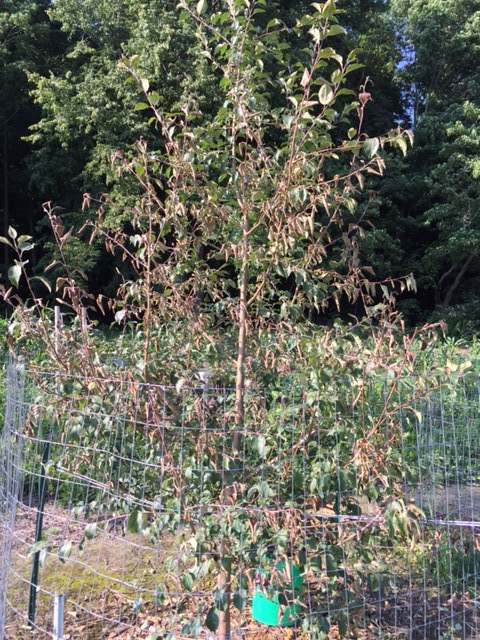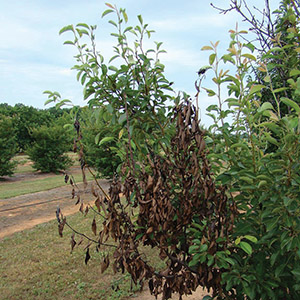

When should you not spray fruit trees?ĭormant oils should be used early in the spring, before the leaf buds begin to open. Just as plants absorb water best early in the morning, they will absorb chemicals most effectively between 3 a.m. When is the best time of day to spray fruit trees? Severely damaged trees may have to be removed. There is no cure for fire blight however, some trees can be successfully pruned. While this spring is much cooler than last year’s, Beckerman said pears and other ornamental fruit trees are not out of danger. After a period of warm weather, best results are obtained when antibiotics are applied within the 24-hour window before flower wetting during a high infection risk period.Ĭan a pear tree recover from fire blight? Lime sulfur applied during early bloom is also antimicrobial and reduces blight pressure. When is the best time to spray fire blight? Apply a dormant spray in December/January before leaf buds turn green. Spray until the tree is dripping and then spray the ground from trunk to drip line. 15 How do you dispose of fire blight branches?Īs soon as all the leaves are off the tree, spray with Monterey Liqui-Cop® at the rate of four tablespoons per gallon of water post harvest before fall rains begin.14 When do you spray apple trees with fungicide?.11 How do you treat fire blight on loquat trees?.10 When should you spray copper on fruit trees?.9 Can bonide fruit tree spray be used on pear trees?.8 Which pear trees are fire blight resistant?.6 When should you not spray fruit trees?.5 When is the best time of day to spray fruit trees?.4 Can a pear tree recover from fire blight?.3 How do you control fire blight on pear trees?.2 When is the best time to spray fire blight?.(Neither option will eliminate all new infections or those already existing in the wood.) Refer to product labels for proper rates and use. A copper sulfate fungicide (Bonide® Copper Fungicide) is also an option when applied several times while the blossoms are open. Reduce new infections by spraying an antibiotic such as streptomycin sulfate (Ferti-lome® Fire Blight Spray) on flowers or shoots before the bacteria infect them.Reduce excessive succulence by avoiding extreme fertilization and watering.– To prevent rust, dry and oil tools after using them. – To avoid spreading bacteria during pruning, sanitize the pruning tool before each cut, using a 10-percent bleach solution (one part bleach to nine parts water). – Cut an infected branch 4 to 6 inches below the visible injury or canker. During winter dormancy, use sanitation pruning to remove infected wood:.infects new, tender, succulent twigs and leaves.also spreads by rain, which splashes onto the bacterial ooze and causes new infections and.forms an ooze that attracts insects, including bees, that then spread the bacteria via the nectarthodes (openings at the base of flowers).over-winters in cankers, budscars, and branches.The bacterium, Erwinia amylovora, causes fire blight. Branches develop dark, sunken cankers that enlarge and girdle the branches.Twigs wilt from the tip downward, turning black and curling in a “shepherd’s crook,” giving them a burnt appearance (Fig.Leaves progressively turn brown, develop black blotches, curl, and eventually shrivel.

Infected flowers become water-soaked (translucent and wilted), shrivel, and turn brown.Other common Texas woody ornamentals affected by fire blight are loquat, cotoneaster, and pyracantha.

One of the most destructive diseases of commercial apples and pears, fire blight is also a serious disease of the popular ornamental Bradford pears used in many Texas landscapes (Fig. With vascular wilt diseases, pathogens block the water-carrying (vascular) system of the plant, causing the leaves, stems, and branches to wither, weaken, and die.

Fire blight causes vascular wilt in many varieties of pome trees (apples, pears, and ornamental pears) and members of the Rosaceae family (a wide range of trees, shrubs, herbs, and ornamental plants such as roses, strawberries, figs, and mulberries).


 0 kommentar(er)
0 kommentar(er)
